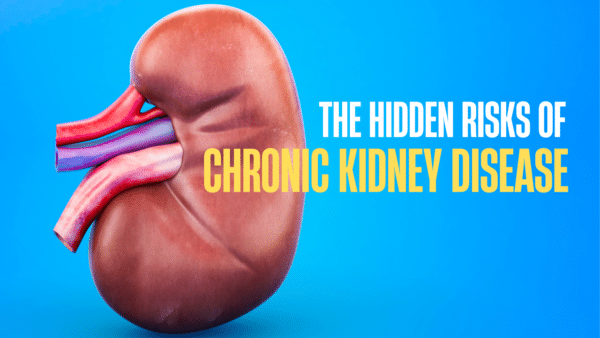Feeling upset or frustrated for no reason is a common emotion. However, there could be thousands of reasons why a person goes through these sad and vulnerable emotions during their lifetime.
However, when you experience these feelings of sadness, anxiety, and frustration dwelling in your life for longer periods, or rather, you feel as if there seems to be no end to these feelings, that is when you have a problem at hand.
If it is not evident already, these constant feelings of self-pity and loss of interest in the things that you previously found enjoyable point toward the obvious fact that your mental health is being compromised.

There are several reasons why this happens. Usually, the ‘trigger’ is an immense amount of loss, stress, or tension that is significant enough to impact all your activities and make you feel vulnerable to the extent that you feel like giving it up.
Mental Health Disorders: Anxiety And Depression
Among the many mental health disorders that exist, anxiety and depression are two of the leading reasons a person feels so troubled, anxious, and sad for no obvious reason. Therefore, it is important to exclude both of them before going for any treatment available. If these conditions are not treated, they can give rise to severe consequences and even lead to life-threatening sequelae, which nobody wants.
If you are conflicted regarding which condition you are suffering from the above two, do not worry. Reading ahead will make your mind clear. But before you go into that, it is better to learn more about each of these conditions so that you know beforehand what you are dealing with.
And, of course, there is no need to worry about these conditions or whether you are suffering from them or not. Both anxiety and depression are curable when diagnosed within the right time, and you can feel free from their symptoms in no time.
Anxiety – The Feeling That Never Lets You Rest!
We all have experienced some level of anxiety at one point in our lives. Anxiety is a completely normal emotion, just like happiness and sadness. So, most of the time, it is merely an aggravation of our inner feelings that might range from being tense, frightened, worried, or frustrated regarding something that we are anticipating at the moment.
There are way too many triggers that could set off one’s anxiety levels and make a person feel unsure regarding their feelings. It is estimated that at a given time, approximately 40 million people (20% of the total population) suffer from anxiety and its related disorders in the United States alone.
Anxiety occurs due to imbalances and mostly declines in the levels of neurotransmitters such as norepinephrine, serotonin, gamma-aminobutyric acid (GABA), and dopamine.
The most common symptoms that develop when a person feels anxious are as follows:
● Excessive feeling of worrying over the smallest of things,
● A nagging feeling that things will not proceed as expected or will turn out to be worse than anticipated,
● A feeling of unexplained fatigue or weakness,
● Restlessness or an inability to sit still or even concentrate on anything,
● Tense muscles,
● Headaches.
It is common to experience physical symptoms such as headaches and muscle cramps when one feels anxious, as stated above. It is the body’s response to your anxiety – it starts perceiving things as threatening, leading to you developing exaggerated, excess, or inappropriate responses often.
Generalized Anxiety Disorder (GAD):
‘Generalized Anxiety Disorder’ is an umbrella term given to the feeling of persistent worry or anxiousness over small things. This condition is diagnosed when a person cannot control their anxiety for more than six months. The severity of symptoms either remains the same or keeps on increasing.
Along with the increasing anxiety, physical symptoms such as heartburn, stomach aches, headaches, and nausea also start manifesting themselves in the body of an affected individual.
Depression – The Feeling That Slowly Takes Everything Away!
In our world today, the term ‘Depression’ is perhaps the most commonly used word. This is because several similar symptoms that mimic depression make every other person feel as if they are suffering from this very condition.
Depression is indeed a very serious mental health disorder. It is the only mental health disorder where if the symptoms are not controlled timely, it could lead to the development of suicidal ideation and even lead the person to act upon it. Therefore, it is extremely necessary that as soon as a person is diagnosed with clinical depression, they are started with its treatment to avoid such severe consequences.
In the United States of America, about 8.5% of the adult population has experienced at least one major depressive disorder episode. Depression is serious and needs to be looked into to save and improve the patients’ lives.
Depression can be diagnosed very easily. There are three classic features of depression. If these symptoms persist for at least two weeks or more, it is obvious that the person is suffering from depression. These three characteristic features include:
● Persistently depressed or low mood with no intention to change it or od something to come out of this phase,
● Lack of interest in those activities that were previously a good source of personal entertainment and recreation,
● Decreased energy and increased fatigue.
As soon as the person gets diagnosed with depression, they are directed towards the right treatment or therapy plan so that they may break free from their shells and get treated. But unfortunately, the same neurotransmitters – norepinephrine, serotonin, GABA, and dopamine- were imbalanced and mostly decreased in depressed patients.
Which Of The Two Conditions Are you Suffering From?
It is very easy to judge the condition that matches your current feelings from the symptoms mentioned earlier. Although nothing can substitute the proper diagnosis of a psychiatrist, it is possible that you also know what has been troubling you and keeping you so restless and worried for the past few days.
Among the two conditions, depression is the more serious one. It needs to be urgently evaluated and treated accordingly. Sometimes, both anxiety and depression can coexist in a patient too, and when this happens, it usually takes longer than usual for the symptoms to resolve and get treated.
Therefore, it may be safe to assume that once you know your trigger – whether it is a momentary condition that feels nerve-wracking (anxiety) or if it is due to some serious stressful or major heartbreaking trigger (depression), you can easily know what mental health disorder you are suffering from.
There are many similarities in the treatment for both these conditions. Antidepressants, for example, need to be given in both cases to waive off the symptoms of either of these conditions.
Cognitive Behavioral Therapy (CBT) is also a proven and effective means of therapy that helps in treating either of these conditions.
References:
1. Prina, A. M., Ferri, C. P., Guerra, M., Brayne, C., & Prince, M. (2011). Prevalence of anxiety and its correlates among older adults in Latin America, India and China: cross-cultural study. The British journal of psychiatry : the journal of mental science, 199(6), 485–491. https://doi.org/10.1192/bjp.bp.110.083915
2. Goodwin, R. D., Weinberger, A. H., Kim, J. H., Wu, M., & Galea, S. (2020). Trends in anxiety among adults in the United States, 2008-2018: Rapid increases among young adults. Journal of psychiatric research, 130, 441–446. https://doi.org/10.1016/j.jpsychires.2020.08.014
3. Li, H., Ge, S., Greene, B., & Dunbar-Jacob, J. (2018). Depression in the context of chronic diseases in the United States and China. International journal of nursing sciences, 6(1), 117–122. https://doi.org/10.1016/j.ijnss.2018.11.007
4. Young, A. S., Klap, R., Shoai, R., & Wells, K. B. (2008). Persistent depression and anxiety in the United States: prevalence and quality of care. Psychiatric Services, 59(12), 1391-1398.
5. Bains N, Abdijadid S. Major Depressive Disorder. [Updated 2021 Apr 20]. In: StatPearls [Internet]. Treasure Island (FL): StatPearls Publishing; 2022 Jan-. Available from: https://www.ncbi.nlm.nih.gov/books/NBK559078/

